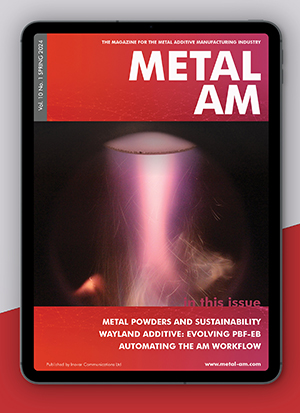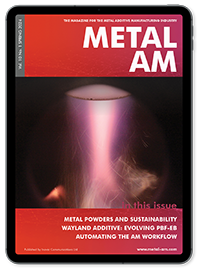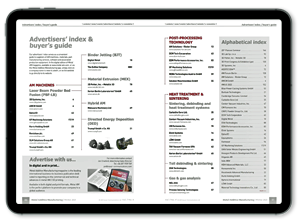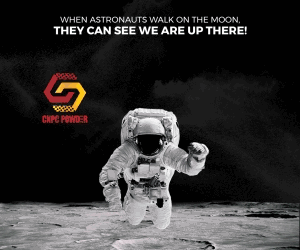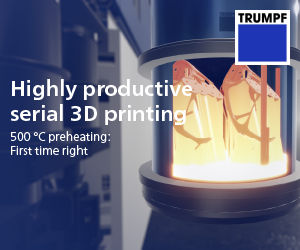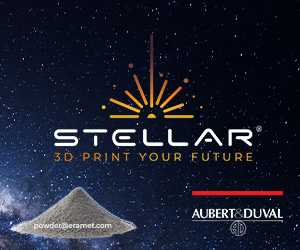NASA launches Space Technology Research Institute for metal Additive Manufacturing
April 17, 2023
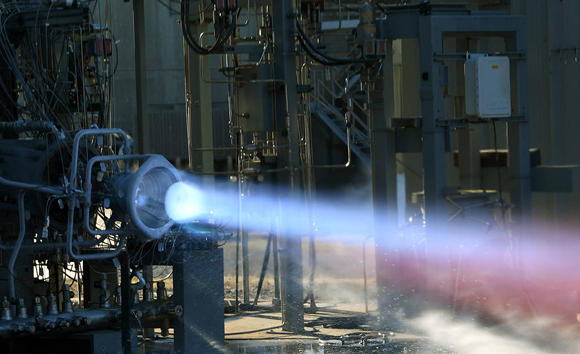
NASA has announced that it will create two new institutes to develop technology in critical areas of engineering and climate research. The new Space Technology Research Institutes (STRIs) will leverage teams led by US universities to create multidisciplinary research and technology development programmes critical to NASA’s future. By bringing together science, engineering, and other disciplines from universities, industry, and non-profits, the institutes aim to impact future aerospace capabilities through investments in early-stage technology.
One of the research institutes (the Quantum Pathways Institute) will focus on quantum sensing technology in support of climate research. The other (the Institute for Model-Based Qualification & Certification of Additive Manufacturing, or IMQCAM) will work to improve understanding and help enable rapid certification of metal parts created using Additive Manufacturing techniques.
“We’re thrilled to draw on the expertise of these multi-university teams to create technology for some of our most pressing needs,” stated Jim Reuter, associate administrator for the agency’s Space Technology Mission Directorate at NASA Headquarters in Washington. “Their work will enable next-generation science for studying our home planet and broaden the use of 3D printed metal parts for spaceflight with state-of-the-art modelling.”
Each institute will receive up to $15 million over five years.
Institute for Model-Based Qualification & Certification of Additive Manufacturing (IMQCAM)
Carnegie Mellon University in Pittsburgh, Pennsylvania, will lead Institute for Model-based Qualification & Certification of Additive Manufacturing (IMQCAM) aiming to improve computer models of additively manufactured metal parts and expand their utility in spaceflight applications. The institute will be co-led by Johns Hopkins University in Baltimore, Maryland.
Metal Additive Manufacturing can be uses for applications such as rocket engines – giving more flexibility to create new parts when designs change. The technology could also be used at a human outpost on the Moon, where bringing pre-fabricated parts would be expensive and limiting. However, efficient certification and use of such parts requires high-accuracy predictions of their characteristics.
“The internal structure of this type of part is much different than what’s produced by any other method,” added Tony Rollett, principal investigator for the institute and US Steel professor of metallurgical engineering and materials science at Carnegie Mellon University. “The institute will focus on creating the models NASA and others in industry would need to use these parts on a daily basis.”
Detailed computer models, known as digital twins, will allow engineers to understand the parts’ capabilities and limitations – such as how much stress the parts can take before breaking. Such models will provide the predictability of part properties based on their processing that is key for certifying the parts for use. The institute will develop digital twins for AM parts made from spaceflight materials that are commonly used for Additive Manufacturing, as well as evaluating and modelling new materials.
Somnath Ghosh, the Michael G Callas professor in civil and systems engineering at Johns Hopkins University’s Whiting School of Engineering, will serve as the co-principal investigator and will co-direct the institute, along with Rollett. Additional partners on the institute include Vanderbilt University, University of Texas at San Antonio, University of Virginia, Case Western Reserve University, Johns Hopkins University Applied Physics Laboratory, Southwest Research Institute, and Pratt & Whitney.
Quantum Pathways Institute
The University of Texas at Austin will lead the Quantum Pathways Institute, focused on advancing quantum sensing technology for next-generation Earth science applications. Such technology would enable new understanding of our planet and the effects of climate change.
Quantum sensors use quantum physics principles to potentially collect more precise data and enable unprecedented science measurements. These sensors could be particularly useful for satellites in orbit around Earth to collect mass change data – a type of measurement that can tell scientists about how ice, oceans, and land water are moving and changing. Though the basic physics and technology for quantum sensors have been proven in concept, work is required to develop quantum sensors at the precisions necessary for next-generation science needs during spaceflight missions.
“Quantum sensing methods have shown a great deal of promise in computing, communications, and now for Earth science remote sensing applications,” stated Dr. Srinivas Bettadpur, principal investigator for the institute and professor of aerospace engineering and engineering mechanics at the University of Texas at Austin. “Our intent is to advance this technology and get it ready for space as soon as we can.”
The institute will work to further advance the physics underlying quantum sensors, design how these sensors could be built for space missions and understand how mission design and systems engineering would need to adapt to accommodate this new technology.
Partners on the institute include University of Colorado Boulder; University of California, Santa Barbara; California Institute of Technology; and the National Institute of Standards and Technology.
Liked this story? Read the lead article in the Spring 2023 issue of Metal AM – Separation anxiety: Lessons learned at NASA from a developmental rocket engine failure
Download Metal AM magazine
